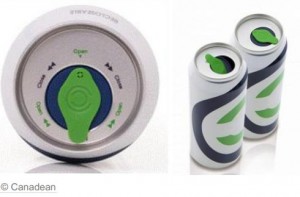 rage caps and closures are now more popular than metal closures, according to a new report from market research organisation Canadean.
rage caps and closures are now more popular than metal closures, according to a new report from market research organisation Canadean.According to the report, plastic closures (49 per cent) overtook metal closures (48 per cent) in 2013, gaining the largest share of the global market for beverage closures. In comparison, metal closures held 51 per cent of the market in 2007. The advance of plastic closures is primarily associated with a shift towards more innovative, lightweight, cost saving packaging, according to Canadean.
“Plastics closures crossed a critical threshold last year in overtaking the share of their metal counterparts across all CPG end-markets,” said Dominic Cakebread, Director of Packaging Services at Canadean.
Over recent years, the economic downturn has encouraged a focus on cost and material savings in the beverage industry, with the aim of delivering cheaper closures that require minimal adaptation of installed technology. Canadean found that plastic closures have benefitted from this with their intrinsically lightweight properties and strong potential for innovation.
New innovations in plastic closures
There have been a number of new innovations for plastic closures in the last two years, with more resistant, technologically advanced lightweight caps providing greater potential for energy reduction and material savings.
Canadean found that lightweight packaging in general had been a strong trend in the beverage industry, as suppliers continued to strive to develop products that satisfy both environment and cost concerns.
According to Canadean analysts, the recent growth of plastic closures has been driven partly by the associated gain in share of plastics containers and partly by further advances in closure design, materials and systems.
“These have been focusing on reducing polymer weight and cost, while maintaining or improving technical performance and convenience features,” Mr Cakebread said. “It is the greater flexibility of plastics to adapt to the changing demands of the closure market that give them their on-going advantage,” he said.
Innovation in plastic closures continues to be of growing interest, holding great potential for development in the future. As a result, the gap between plastic and metal closures is expected to widen, with 52 per cent of the market expected to be held by plastic closures in 2017.
Case study
In May 2013, can2closure launched a resealable end. The closure consisted of a tamper-evident lever that opens the can when turned 180 degrees in either direction. This simple mechanism was designed to be easier to open that the standard stay-on tab opening of beverage cans, and can be repeatedly sealed.





